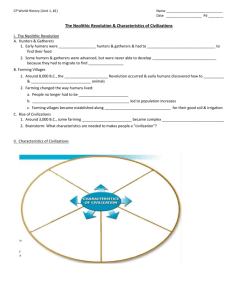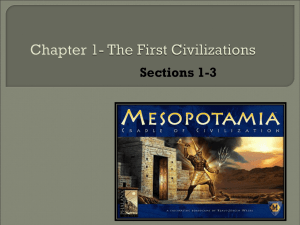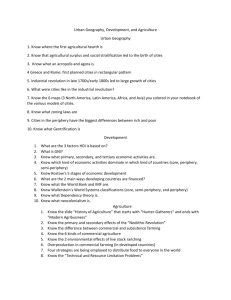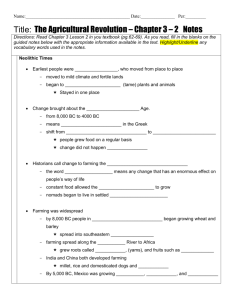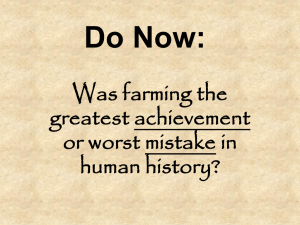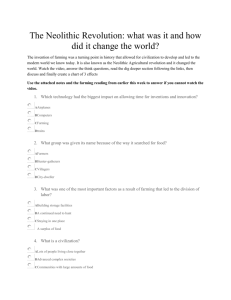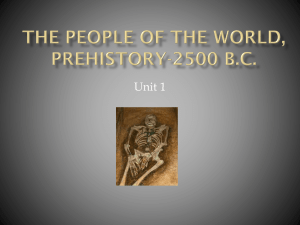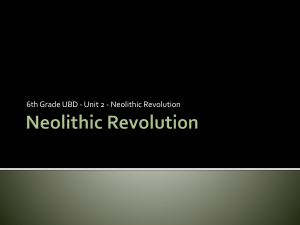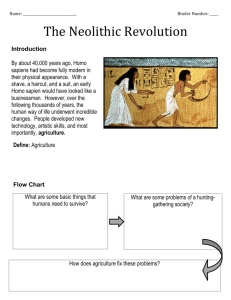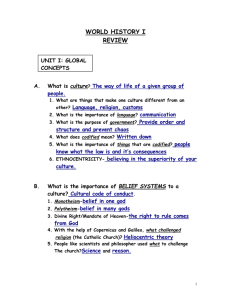Chapter 1.2
advertisement
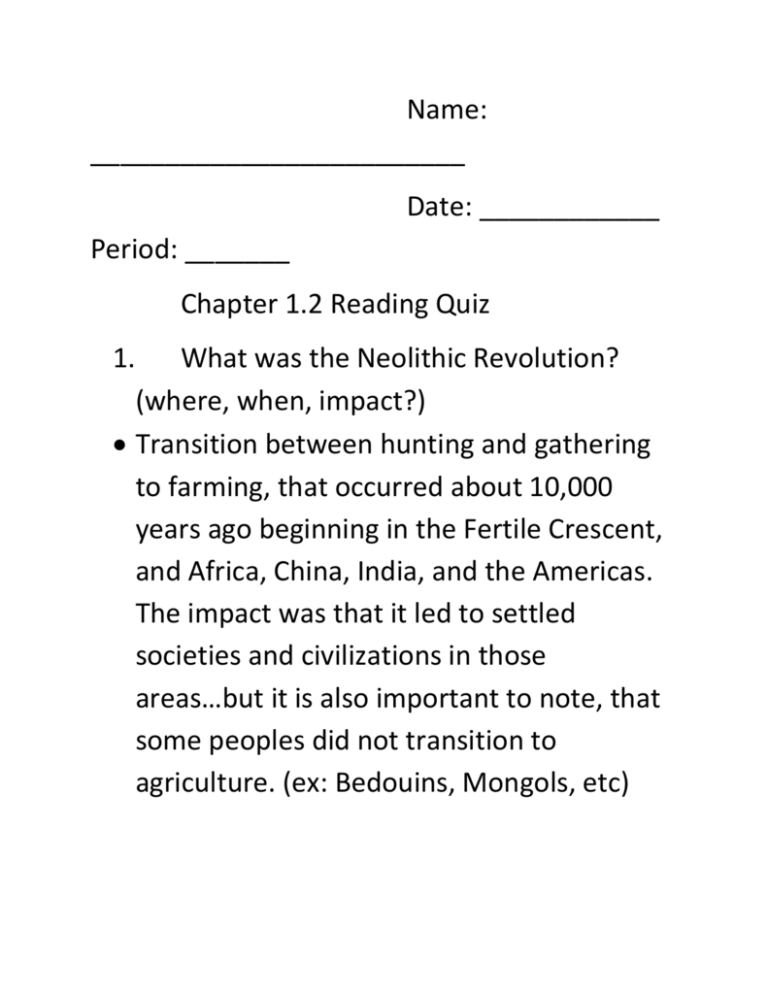
Name: _________________________ Date: ____________ Period: _______ Chapter 1.2 Reading Quiz 1. What was the Neolithic Revolution? (where, when, impact?) Transition between hunting and gathering to farming, that occurred about 10,000 years ago beginning in the Fertile Crescent, and Africa, China, India, and the Americas. The impact was that it led to settled societies and civilizations in those areas…but it is also important to note, that some peoples did not transition to agriculture. (ex: Bedouins, Mongols, etc) 2. Write the name of the rivers that river valleys developed along in these areas: Africa Nile River China 3. Huang He River & Yangtze Who was the “Iceman”? A mummified body of a prehistoric man, found in 1991 near the border of Austria and Italy. He was found along with a tool kit with arrows, a longbow, a sharpener, a flint dagger, a woven sheath, and a copper ax. Lived about 5,000 years ago Chapter 1.2 Humans Try to Control Nature I. Achievements in Technology and Art Humans became more advanced artistically and technologically A. A New Tool Kit Nomads- wander from place to place in search of food Hunter-gatherers/ (Hunter-foragers): food supply depended on hunting animals and collecting plants…usually divided by gendermen= hunters, women= foragers Digging sticks, spears, knives, fish hooks, harpoons Cro-Magnons used bone needles to sew clothing made of animal hides B. Paleolithic Art Jewelry made from shells, animal teeth, and mammoth tusks Paleolithic Cave Art- colored paints from charcoal, mud, and animal blood o Ex: Lascaux Cave in France II. The Neolithic Revolution Hunter-gatherers generally lived in bands of no more than 2-3 dozen people…men hunted, women gathered People then started scattering seeds, and made the connection that it led to plants (women?) Neolithic Revolution/ Agricultural Revolution: transition between hunting and gathering and farming A. Causes of the Agricultural Revolution Perhaps ushered in by a change in climate, rising temperatures worldwide= longer growing seasons With food surplus= population increase Unlike hunting- farming provided a steadier source of food (though actually more time consuming- 60 hours of farming vs. 20 hours hunting-gathering) B. Early Farming Methods Slash-and-burn farming: cut trees/ burn them to clear a field…ashes fertilized the soil Ex: Mount Saint Helens C. Domestication of Animals Domestication/ taming of animals o Horses, dogs, goats, pigs o Use of corralling and stampede Pastoral nomads also domesticated animals, but not plants, and moved in search of “pastures” for their animals D. Revolution in Jarmo Early location of agriculture- Jarmo in the Zagros Mountains in northeastern Iraq Wild wheat and barley, wild goats, pigs, sheep, and horses Believed Jarmo was established about 9,000 years ago III. Villages Grow and Prosper Transition to farming happened at different times throughout the world, (and some peoples never transitioned) A. Farming Develops in Many Places Africa: Nile River Valley- wheat, barley, and other crops China: about 8,000 years ago, along Huang He river valley- millet then wild rice Mexico and Central America-Farmers cultivated corn, beans, and squash Peru: farmers in the Central Andes were first to grow tomatoes, sweet potatoes, and white potatoes B. Catal Huyuk Located in fertile plain of south-central Turkey Farmers produced wheat, barley, peas and raised sheep and cattle Potters and weavers…obsidian products 8,000 years ago Catal Huyuk was home to 6,000 people Early villages expanded into cities that would become the setting for more complex cultures. Cave Art: 1. What was the purpose? 2. What do you think is going on with the image of the “man”?

